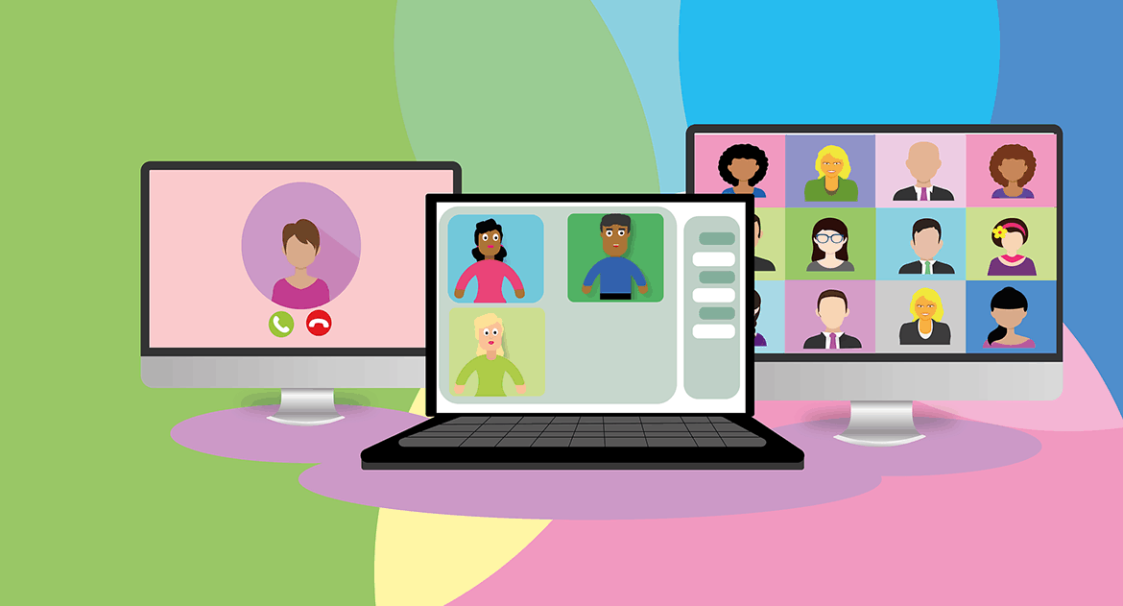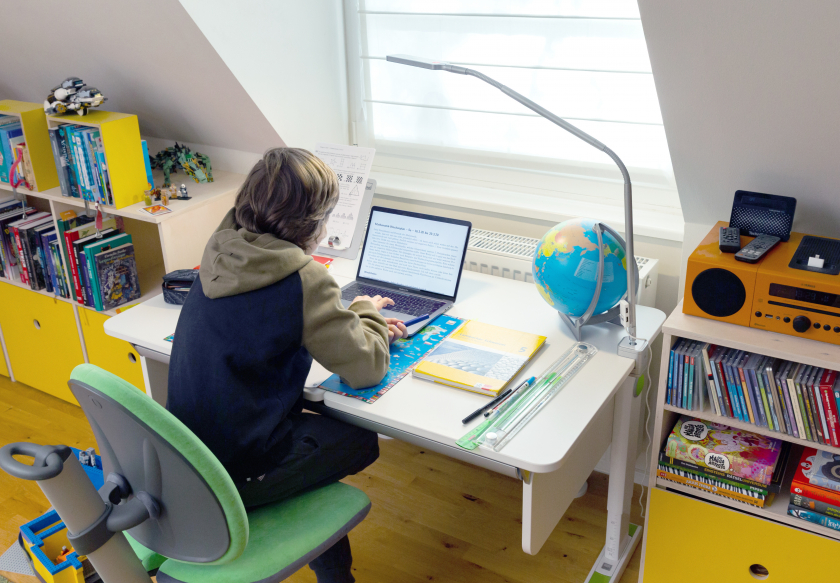First of all, think about how you will work with your students. Distance work can be done in one of the ways described below, or you can use a combination of both.
Real-time (online) meetings
You arrange a time with your students for a live or scheduled online meeting. In the online lesson, you explain the material, answer students’ questions, and ask them questions. At the end of this article, you’ll find a list of services that allow you to hold online meetings.
Distance learning through interactive learning materials
Student learning can be built through interactive learning materials that contain instructions, instructional content (videos, interactive videos, text, pictures), self-testing, links, etc. With the help of such learning materials, the student learns a new topic independently. For students’ questions, it is worth creating a chat room to communicate so that when they encounter difficulties, they will continue to complete the assignments.
Plan the work.
Take a period of time, such as a week, and plan the work of students in your subject. To organize the work holistically, build on the learning outcomes students need to achieve.
Ask yourself three questions:
- What do I want my students to learn (what learning outcomes will they achieve)?
- How will my students learn it (how will they achieve the learning outcomes)?
- How can I support them in this (how will I help them achieve the learning outcomes and how will I know if they have achieved them)?
Based on the answers, make a plan for yourself: what learning materials to create, how to monitor students’ work, how and when to give them feedback.
You can make a work plan for the students as well. Students need a plan to help them plan their time, both during the day and throughout the school week. The student work plan can include a recommended date and time to start working on the assignment, deadlines for assignments, specific times to meet with the teacher, links to tutorials (if you can provide them right away), or a platform where the work will go.
Determine how you will communicate with students
Students should have an entry point through which they access instructional materials. If you have used some platform (blog, website, messengers, closed group, etc.) in your work with students, then distance learning students can work through it as well. If there was no such platform, then learning materials can be transmitted through an electronic journal (although it may not hold up, so it is better to have an alternative source of communication).
Start creating instructional materials
The usual e-journal task wording “textbook, pp.23-25, read and answer questions” in distance learning becomes meaningless, as it does not contain a learning function. Organizing learning work remotely means helping students figure out what they don’t know and can’t do on their own. To do this, the student must have learning materials and tasks that are appropriate for the age group with which we are working.
Include instructions on how to work (as if you were explaining in the classroom), time needed to work on the task and on the materials, strategies, recommendations, and hints needed.
You can use ready-made study materials created by someone else, or you can create your own.
Below you will find a list of those digital services that will help in the development of instructional materials.
Consider the challenges we may face
- Challenge 1. Students who have not worked in class may not start working remotely either. There is no general rule to recommend to every teacher here. We have to decide individually for each student. For some, collaborative work with classmates will work, for some, learning material presented differently, for some, individual consultation with the teacher, etc. I recommend avoiding the use of punitive measures. Temporarily it may help us get someone to work, but in the long run it is not a good strategy. That student will never have the desire to learn.
- Challenge 2. It will take time to create instructional material. We create instructional material not to test students’ memory or problem-solving skills, but to teach them. It is one thing for us to impart to students in the classroom what we know very well, it is another thing to make that knowledge appear in their heads, and when they are working at home.
- Challenge 3. It’s worth thinking through the work that the kids will be doing on the mark. Students have google and classmates in a shared chat room at their fingertips. So the work on the mark should be such that the first and second factor are helpers. And for that, you have to think about the quality of the assignments for the students.
Try to avoid these mistakes
- Mistake 1. Make a list of assignments for a student (like homework we used to assign) in an electronic magazine. Our job is not to sketch out assignments for students, but to structure their learning.
- Mistake 2. Thinking about how to control the student. In this case, we will think primarily about how and why to give a grade, not how to help them learn.
- Mistake 3. Marking for the process of learning, not for the outcome. When a student learns learning material, works with self-check tests, asks questions, and makes mistakes, they are learning. We support this process with our feedback and help from classmates, for example, in a shared chat room. When he has already learned, then we work on the mark as a result of the work he has done for some time.
- Mistake 4. Asking students to take pictures of assignments and send them to you in the mail. You can do so only in the case of single students who do not succeed in the task and need your feedback. Otherwise, you’ll get about a hundred emails every day with pictures of students in your inbox.

Determine what digital services you’ll use
Online meetings with students.
Services that you use to organize your online lesson in real time.
- Zoom
A service for video conferencing and webinars. The free version can host meetings of up to 40 minutes and up to 100 people. Students can connect to the meeting via phone (zoom app recommended) or computer. Everyone in the meeting has the ability to speak by voice, show videos, and share their screen.
- Facebook Live
Broadcast videos directly from Facebook. Create a private classroom group where you can launch Live Broadcasts and teach lessons online. It’s free. And there’s no time limit.
- Instagram Live.
Broadcast videos from Instagram. You can host in your account. If students are subscribed to you, they’ll be notified when it goes live. Or create a closed class account and host online meetings there.
- WiziQ
A service for organizing online learning. A class is created that students connect to (they must create an account in this environment). Here you can communicate, post assignments and announcements. And you can hold online meetings. In the free version, only 10 participants can connect to the course and to the video meeting.
- Periscope
An app for live broadcasts. For students to watch your broadcasts, they need to install this app on their phone and create an account.
- Skype
Video conferencing service. Each student must have a Skype account. A class group is created and a call is made at a certain time to which all members of the group are connected.
